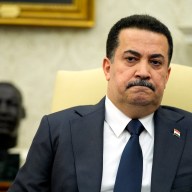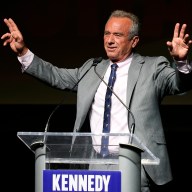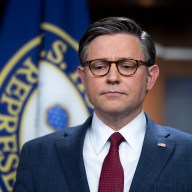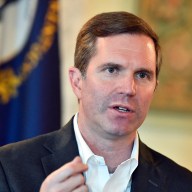One leader is an African-American christened by many as charismatic force for change who plans to turn the White House bowling alley into a basketball court. The other is an Anglo-Canadian maligned by many for stiffness who has been talking about writing a book on hockey history for at least three years.
So let’s put aside dealing with the minutia of the worst economic crisis of our lifetime, and talk about what Obama and Harper will likely at least touch on at some point today — sports — specifically hockey and basketball.
Sure one’s a Democrat and the other a Conservative, but will they have anything in common sportswise?
It’s hard not to find two sports more vastly different than hockey and basketball. Even though NHL and NBA seasons mirror each other and teams from each league share 10 arenas across North America, the culture of the sports differ greatly.
Hardwood vs. ice. Flair vs. grit. At last count, the NHL was 96.6% Caucasian, while the NBA was 77% Black.
Just ask certain Maple Leaf fans what they think about the Raptors sometime.
Yet why does each sport suffer popularity issues in the other country?
In the U.S., the answer is clearer. South of the Mason-Dixon line, hockey has no relevance, mostly because of the absence of ice. It may not have stopped Gary Bettman and the NHL from expanding ad nauseam into the sun/bible/non-hockey belt, but most kids outside New England, Michigan and Minnesota don’t grow up playing it and therefore lack connection to it.
The same can’t be said in Canada. It would be impossible to find a school in the country without at least two basketball nets, and an aimless drive through suburbia would find rims and backboards on a large number of driveways.
Yet outside a handful of communities, the game takes a far back seat to hockey and paltry TV ratings outside Toronto and other areas helps drive the Canadian media’s hyperbolic obsession with puck.
“People can relate to the average hockey player because the athletes come as much from small town Canada than any large urban centre,” says Robert Schinke, associate professor at Laurentian University and co-author of a book called Cultural Sport Psychology.
The USA’s Olympic hockey win over the USSR in 1980 consistently ranks as one of the greatest sporting moments in American history. Plus, it likely paved the way for cinematic masterpieces like Rocky IV.
Meanwhile, at the 1983 World University Games in Edmonton, the Canadian men’s basketball team stunned a U.S. squad featuring Charles Barkley and Karl Malone en route to a gold medal. Unlike the Miracle on Ice stateside, it’s barely remembered in Canada, and today the first five hits of a Google search titled “Canada USA basketball 1983” brings up nothing related to the actual event.
But the process of getting basketball back to respectability in Canada is hopefully changing.
“We’ve taken steps in the right direction,” says Toronto Raptors broadcaster and former national team player Sherman Hamilton.
“Nothing’s perfect yet because the product’s not finished … but I think it’s really started at the grassroots level.”
And while like many others, Hamilton concedes that there needs to be a bigger financial commitment from both governments and the business community, success itself can go a long way.
“Once our players reach maturity they have to win.”
B-ball upsides
• Shaquille O’Neal
• Hops, dunks
• Nicknames that don’t simply add a ‘y’ or ‘er’ to the end of a player’s surname
Hockey upsides
•Alex Ovechkin
• Can usually expect every player to bust their butt
• Stanley Cup much nicer than Larry O’Brien trophy
Even money
• Head-to-head, Harper probably spells H-O-R-S-E faster than you can say “Afghanistan.” But while lacking a signature move such as the Shawinigan Handshake, Harper likely gets Obama back in road hockey with a blazing wristshot .
















